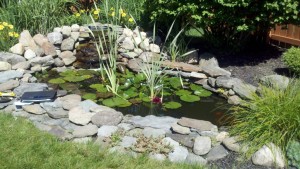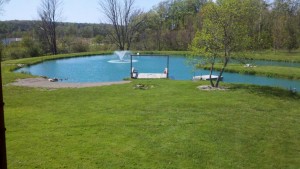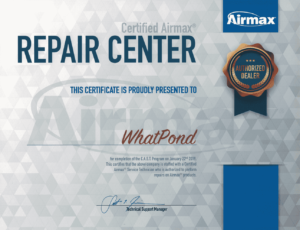Ponds are really much more than just bodies of water, they are soothing, mystical, beautiful, cooling and can really be great to melt our daily stress away. Established ponds create a beautiful oasis and an eco- friendly environment that attracts all types of wildlife and can be a peaceful home for fish, frogs, birds and many other animals.
You might be wondering why and how ponds areas be able to accomplish such serenity.
My personal thought is that they are part of what we are made of, and that is water. And, as we all know, without water, life would cease to exist.
Since our bodies are made up mostly of water, and water itself gives life, sounds like the gentle waves lapping on shore or from a fountain or waterfall and also the physical sensations from dangling our feet in the water all bring feelings of peace, comfort and serenity.
Two Different Types Of Ponds
Let’s take a look at the two different types of ponds, both of which give us water, soothing sounds and various wildlife attractions.
There are two classifications of ponds, the first one is built above ground and the second is the one that is built below ground.
Above Ground Ponds
 These are rather small ponds that can be built in many areas of your property and are very visually appealing. The above ground pond is more useful for looks rather than the below ground models that are much larger and have more functions.
These are rather small ponds that can be built in many areas of your property and are very visually appealing. The above ground pond is more useful for looks rather than the below ground models that are much larger and have more functions.
Other names for the above ground ponds are Koi Pond and Water Garden Water Feature.
These ponds are measured in gallons and 99 percent of the time they use a liner to hold the water.
For a lack of a better term we’ll call them a closed system, similar to an aboveground swimming pool where we have the liner to contain the water and a pump to circulate the water.
These small above ground ponds almost always have a water fall built into them and sometimes a stream between the waterfall and the pond area.
There are many variations of above grounds, and really it’s a personal decision of how you want to set up yours. Some of them have a simple liner and a pump and are used to keep Koi or goldfish.
Instead of fish some choose to just have a simple or fancy water feature, or fountain. You can easily place drifting plants into these too, like floating Lillie pads.
Below Ground Ponds
 The below ground ponds, also known as, farm ponds, tanks, pools or reservoirs are measured in acres or square feet. The water fills the pond naturally from the watershed, natural springs or a water well.
The below ground ponds, also known as, farm ponds, tanks, pools or reservoirs are measured in acres or square feet. The water fills the pond naturally from the watershed, natural springs or a water well.
They are built using earth with high clay content to retain the water, similar to the above ground pond, but, these use the right type of clay soil in order to avoid using a liner.
Three Main Parts of Large Below Ground Ponds
- The watershed supplies water to keep the pond full. A good watershed comes from a grassy field or woodland, while on the other hand a poor watershed would come from planted fields, filled from grazing livestock or from populated areas.
- The bowl or basin where the water is stored is excavated from the ground, a depression is created and earth is removed, which is then used for the dam.
- Lastly, is the water exit, a controlled area for excess water to leave the pond without creating erosion. Generally, a standpipe or overflow pipe is used to maintain the level of the pond water during regular rain events. But, an emergency spillway is also required for major rain events, such as, major thunderstorms, hurricanes and even snow melt events.
Ponds have been around for many years either made by nature or made by man. The uses for these ponds in the past have been sort of singular in nature. Fire suppression, water storage for crops and livestock.
But, as time passed, ponds have become more appreciated for their visual appeal, and for fishing, creating an oasis for various wildlife, swimming, kayaking, relaxing and many other recreational activities.
These larger ponds can range from a 1/8 of an acre to 5 acres depending on the land you own, type of soil and the size of the watershed to feed the pond. They will attract a variety of wildlife, birds, deer, turkeys and insects.
But, of course, the type of wildlife that it will attract and the visitors you get to your paradise depends on where you live.
Final Thoughts
Overall. I look at a pond as an investment for yourself, your property and giving back to nature in creating another eco system for plants, insects and animals to flourish. And, of course all the benefits for ourselves and our families, such as simply sitting and de-stressing to melt away the daily grind.

